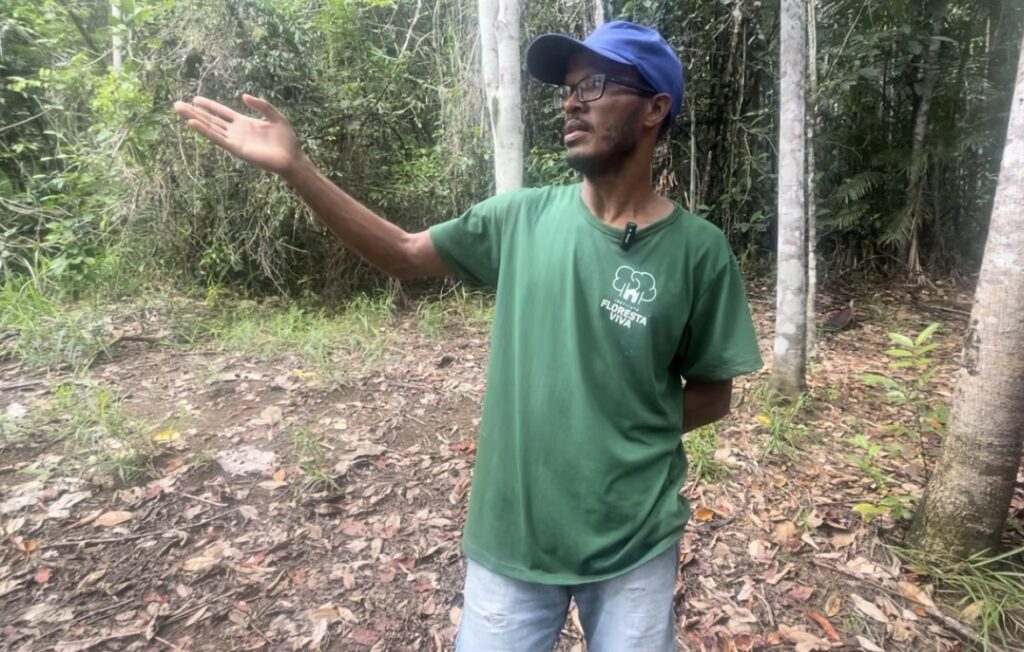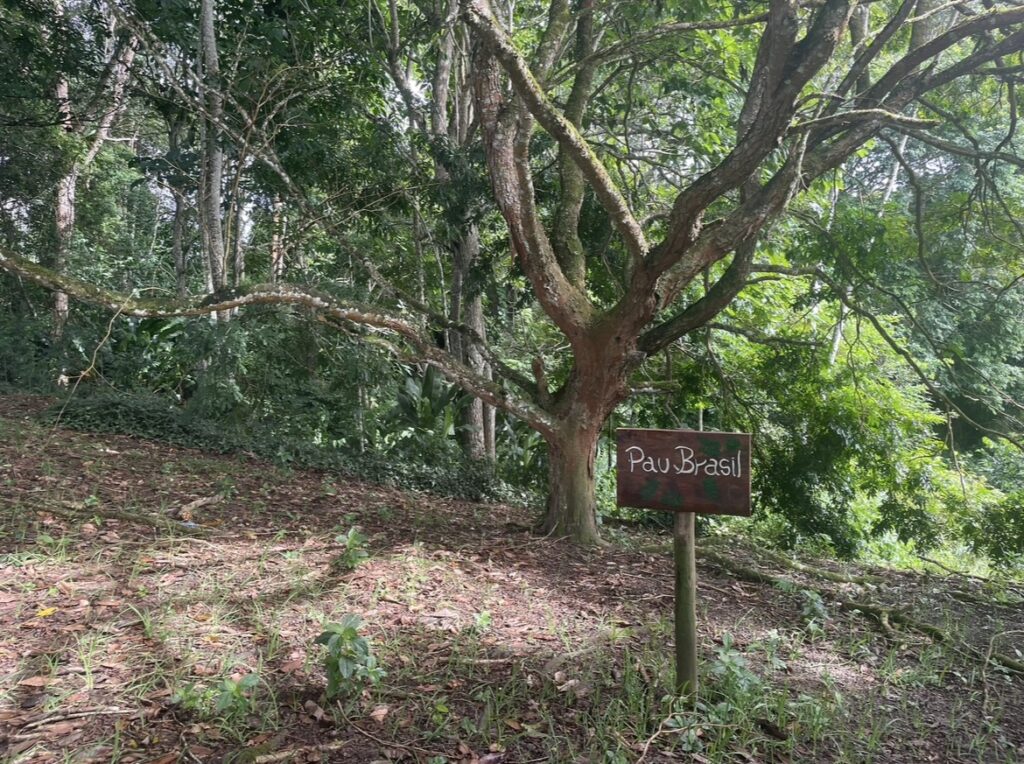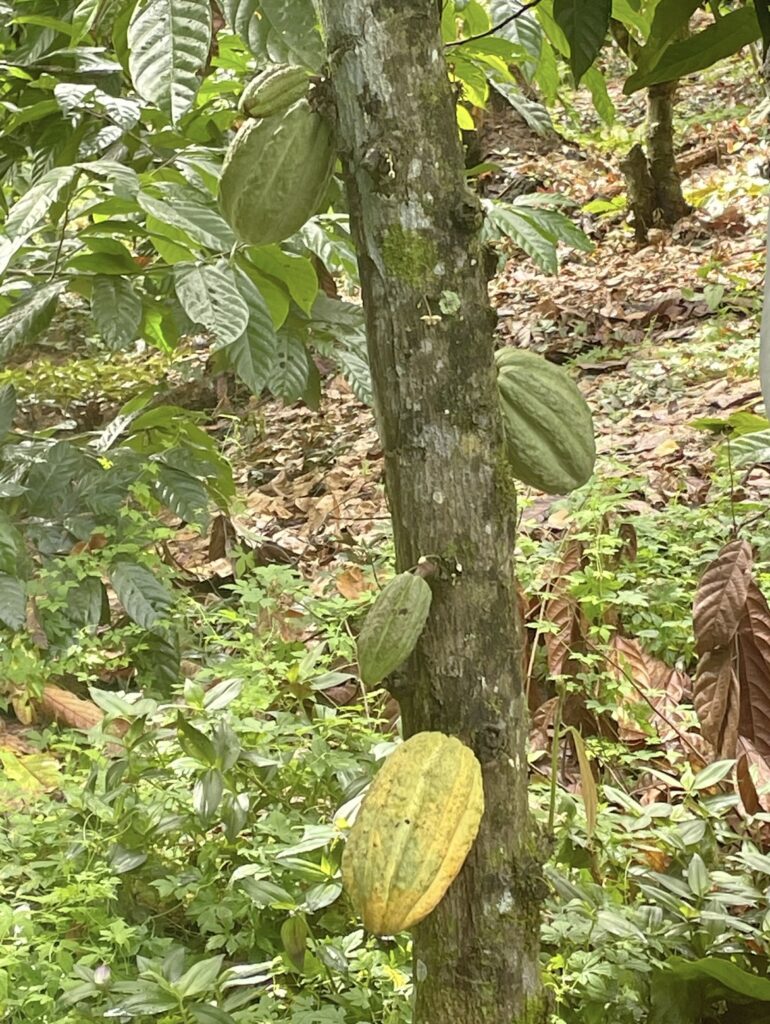CCSU in Brazil
When people think about Brazilian rainforests, they often think of the Amazon since it is the largest rainforest in the world. Fewer people are familiar with Brazil’s other major biome, the Atlantic Forest, which straddles the Brazilian coast from the northeast of the country to the south.
The Atlantic Forest has not fared as well as the Amazon. Prior to the arrival of the Portuguese in 1500, the forest spanned 1.2 million square kilometers or 463,320 square miles, according to WorldRainforests.com, an area larger than the states of Texas, California and New York combined. Today, it covers 38,610 square miles, or less than 10% of the area it once did.

Credit: Yale Environment 360
Colleen Scanlan Lyons, an associate research professor at the University of Colorado Boulder and the project director of the Governors’ Climate and Forests Task Force, said that the decimation of the Atlantic Forest was a result of both colonialism and geography.
“Number one is the colonial project, which is coming in and extracting resources to then send back to the mother country. Portugal was extracting resources from Brazil to pay its debt to England…Brazil had resources, and the resources were the forest,” Lyons said. “The second piece is geography. The Atlantic Forest is so decimated compared to the Amazon because it was easier to get to.”
Lyons added that one of the issues facing the forest today is how to preserve it while creating economic opportunities for those living in its vicinity.
“This the big question for the region…How can you have sustainable forest-based economics that keep the forest standing?” Lyons said. “We know that it’s a biodiversity hotspot. We know that it’s 90% gone. But it’s still really, really important. There’s a lot of endemic species. People depend upon this…So how do we generate income that’s going to keep the forest standing?”
Hundreds of organizations are operating within the Atlantic Forest to conserve and restore what remains. One of them is the Floresta Viva Institute, an organization working to protect the forest in the Brazilian state of Bahia.
Célio de Sousa, an agroforestry technician and co-founder of the institute, said that since its founding in 2003, Floresta Viva has educated thousands of people.

“Along the period of Floresta Viva’s existence, we’ve been gaining “know-how” and disseminating knowledge and ideas in other areas, in other realities,” de Sousa said. “That means that we went beyond the micro of working with 60 or 70 families here and expanded our territory to working with 20,000, 30,000, 40,000 families who are indirectly touched by our work.”
De Sousa added that the institute has distributed 36,000 seedlings of endangered species, such as Brazilwood, and encouraged residents to plant them.
De Sousa said that he joined Floresta Viva because he wanted a job where he could help others.
“I had to make a difference. When I was around 11 or 12, I was left with the sense that I should do something to benefit society, something transformative,” de Sousa said. “I didn’t want to get into the predicament of working to get paid, buying a car and getting paid again. That would not have made me happy. Happiness for me is working with other people and working for the benefit of others. Living, not just surviving.”
Lyons said one way to create a forest-based economy is to reintroduce cacao farming, a practice that collapsed in Brazil during the late 1980s after an ailment known as the witches’ broom disease devastated the crops of many cacao plantations in the region.
“The cocoa economy used to be complimentary because you were growing cocoa underneath the forest canopy and you were having biodiversity,” Lyons said. “And research has shown that places with a little bit of disturbance to grow cacao are environmentally still really biodiverse. They’ve got a lot of species diversity, but they’re economically viable so people can earn money. With the cocoa industry, how can that be scaled right now?”
Marcelo Dias, a professor at the State University of Santa Cruz in Ilhéus, Bahia, Brazil, said that while cacao plantations do keep the forest standing, they still have a negative impact on it because they require the removal of smaller, indigenous trees.
“What they do with the rainforest is to keep the taller trees and take down the smaller ones, and the cocoa grows in the place of the smaller trees,” Dias said. “They say that it is an environmentally friendly kind of plantation, but it’s not, because what they are doing is to replace indigenous flora with an alien tree, which is the cocoa…It takes away a lot of trees that were good for the environment.”
Dias said that the Brazilian government has taken steps in recent years to combat deforestation in the Atlantic Forest, including regulations regarding “preservation areas” meant to keep landowners from cutting down sections of the Atlantic Forest on their property.
“The state goes there and says, ‘You can’t do anything more. It’s a forest, and it’s going to stay a forest,'” Dias said.
Dias added that despite the government’s efforts, lack of enforcement and disregard by landowners has resulted in the measures being largely ineffective.
“There are very huge and very expensive fines for those who try to destroy the forests. But people don’t pay the fines anyway,” Dias said. “The owners of lands make some criminal fires, and then after the fires, there’s nothing left. They say, ‘Well, there’s no more forest here, so I’m going to do whatever I want.’ So, the regulations are good, but they are not effective.”
Despite this, organizations are still working to protect the Atlantic Forest. Dias said that one organization, S.O.S. Mata Atlântica, has been successful in protecting some of Brazil’s unique endemic species, including the golden monkey.
“It was preserved by a movement called S.O.S. Mata Atlântica,” he said. “They made a very huge marketing program about how to preserve and how to take care of this monkey.”
Floresta Viva also continues to work to preserve and restore the Atlantic Forest. De Sousa said that although they are focused on Brazil, his group hopes to inspire others around the world.
“Our eyes stay focused here, but things get out to the world,” he said. “The word gets out and somebody could reproduce it in Africa, in Sudan and the rest of the world.”


